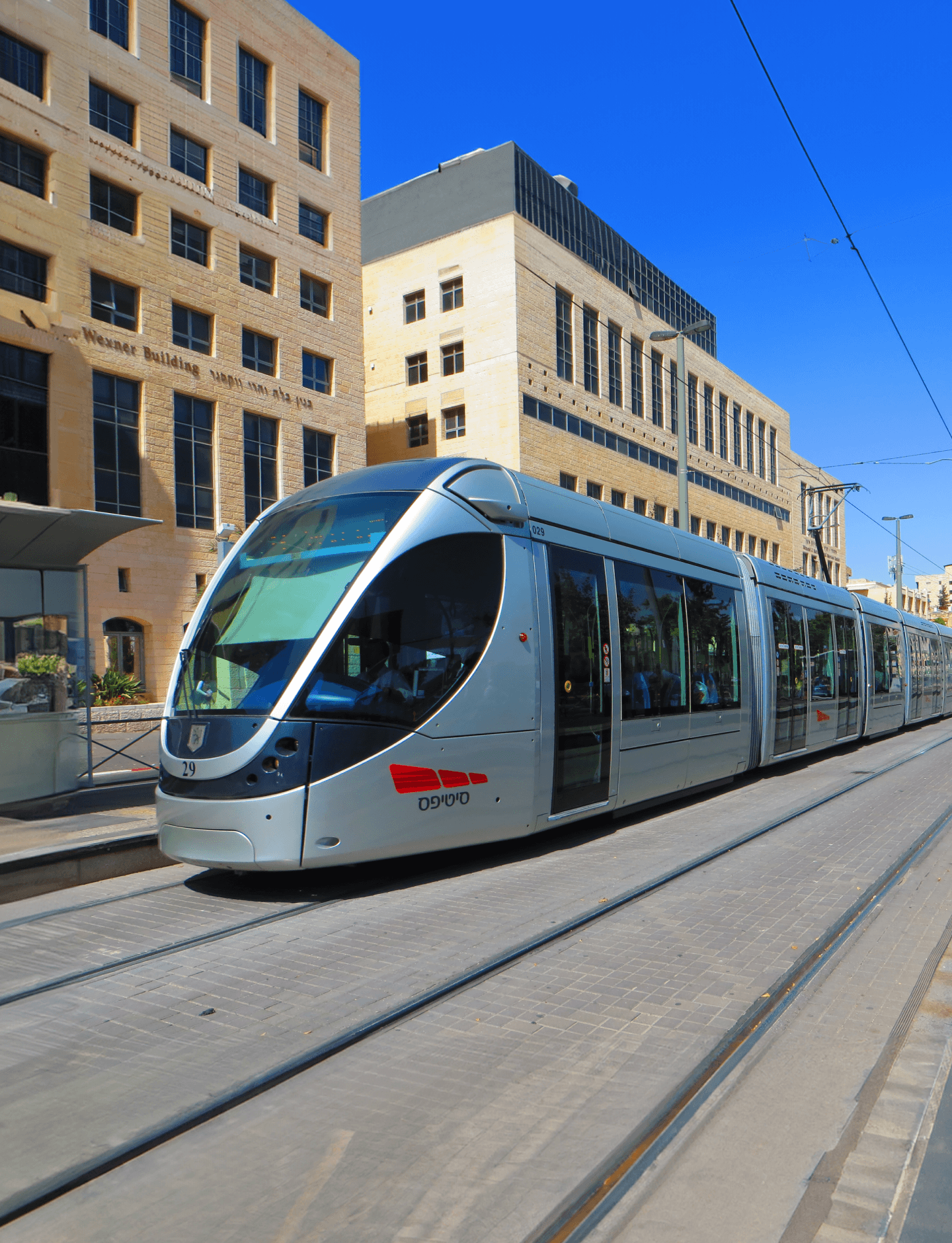Light Rail, Jerusalem
Light Rail, Jerusalem
Israel, Jerusalem
infrastructures
Completed
Light Rail, Jerusalem
Israel, Jerusalem
infrastructures
Completed
Ashtrom Group has laid the red first line of the Jerusalem Light Rail system - 14 km. from Pisgat Ze’ev in the north of the city to Mount Herzl in the south. Construction work proceeded along a congested urban route with heavy vehicle and pedestrian traffic.
14Km
the length of the route
23
Passenger stations
12
Substations


Transformative Mega Project
The Jerusalem Light Rail system, a landmark megaproject developed under a concession agreement with the State of Israel and financial partners, was implemented by Ashtrom in partnership with French firm Alstom. This transformative transit venture reshaped transportation in Israel, significantly enhancing traffic management, air quality, and passenger welfare.
Construction works were completed in 2011 and included a 14 km track with 23 stops and 12 substations, alongside a depot, maintenance yard, and operational offices. The concrete rail bed was cast using two machines expressly manufactured for this purpose, dictating the development of special concrete mixes by the contractor.
As the first LRT line in Israel, the project posed unique engineering and logistical challenges, particularly given the bustling urban environment. Complex traffic plans were required to minimize disruptions for residents, drivers, and businesses, necessitating day-and-night construction teams. Additionally, the route’s proximity to ancient graves and antiquities required careful bypasses and bridging solutions to preserve these historic sites.






